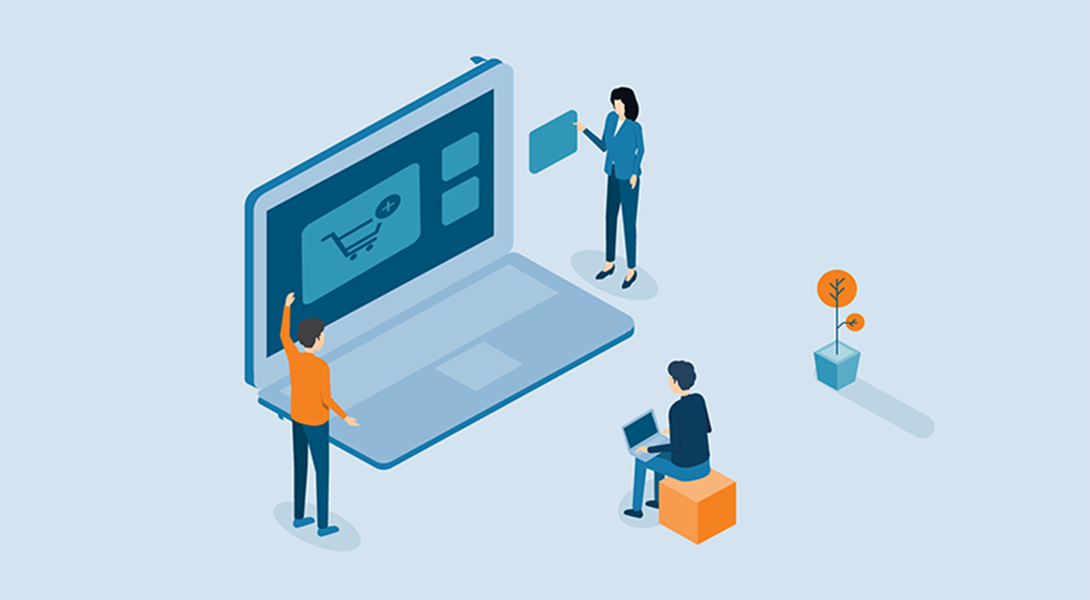Although the lines are blurring between B2B and B2C commerce, there’s no denying that there are key differences in the buying process that are worth noting. The typical B2C product page is designed around speed and simplicity, aligned with the average consumer’s goal of finding the best price and getting in and out as quickly as possible. The B2B buyer’s goals are a little different.
B2B buyers enjoy a longer research process in their buyer journey; they tend to value brand expertise, transparency, and consistent relationship-building more than their B2C counterparts. With that in mind, there are a few specific steps that B2B businesses can take to set up their websites—and product pages—to support these goals.
1. Shipping and Delivery Details
What’s the easiest way to build confidence with potential buyers? Be as transparent as possible, from the early stages of ordering to post-purchase fulfillment. In terms of B2B product page design, this means including clear details about shipping options, expected delivery schedules, and if possible, on-time fulfillment rates taken from your ERP. Customers expect this type of visibility in B2C purchasing, and it’s fast becoming a best practice for B2B purchasing as well.
In one survey by Digital Commerce 360, barely a third (36%) of B2B buyers rated the websites they reviewed as good or excellent, and of the problems they found, 76% agreed that a lack of shipping transparency made their experience worse.
Key Takeaways
- Transparency and information visibility are crucial to B2B purchasing.
- Include clear shipping and delivery details on product pages to keep buyers informed.
2. Product Relationships and Bundles
Cross-selling and up-selling are time-tested ways to boost revenue, and the B2B game is no exception. Look for opportunities to highlight specific product relationships in your eCommerce product library and show customers what’s available.
An easy example would be an OEM offering replacement parts or accessories as a complement to a product order, or a cloud storage provider offering supplementary IT and security services on top of their storage. Monitor the user data flowing through your eCommerce engine and use historical trends to your advantage here. You’ll likely find that certain items are often purchased together or otherwise complement each other; set up bundles for these options and offer a slight discount to incentivize a bulk purchase.
Key Takeaways
- Cross-selling and bundling products are viable options for B2B purchasing, just as they are in B2C.
- Look for opportunities to combine services/products that complement each other.
- Use your marketing promotions or discounts to incentivize buyers to consider these bundled options.
3. Repurchasing Options
Re-purchasing and repeat business are obviously valuable for any business, but B2B is unique in that customer demands tend to be regular and repeatable. If a business’s internal workflows rely on the functions of a given provider, it stands to reason that the business will be more likely to commit to a long-term relationship with that provider than a B2C customer. But just because you have a stronger relationship doesn’t mean you can take them for granted. Companies need to make the re-upping process as easy as possible to keep regulars on board.
Does your eCommerce engine allow you to make re-ordering easy? Consider the experience of your returning customers and how many steps they’ll need to take to re-order. Integrations like a “buy now” button may help, but bear in mind the complexity of B2B transactions and the different stakeholders involved. You may need to set up prompts in your eCommerce platform that ensure the right B2B stakeholders can sign off on any orders placed, with the end goal of making re-purchasing as simple as possible.
Key Takeaways
- More so than B2C, B2B purchasing relationships tend to be driven by regular, predictable orders.
- Make sure you make the re-ordering process as straightforward as possible to encourage repeat business.
- Remember, your marketing teams have data on customer purchase behaviors; apply this historical data to your marketing outreach to get an idea of what initiatives will encourage these repeat orders.
4. Promotions and Loyalty
Loyalty and relationship-building are key aspects of B2B purchasing, so companies have a vested interest in incentivizing ongoing business. In other words, while loyalty programs might seem like something for the B2C domain, they can be just as effective in B2B—provided you give them an extra level of personalization.
A general “take 5% off” promotion code won’t cut it, here. A strong B2B loyalty promotion involves monitoring a customer’s purchasing habits and then tailoring specific offers that supports his/her company. For example, a clothing retailer may be working with an apparel and textile manufacturer to source materials for its custom product line. After a long enough relationship, this retailer may exceed a certain threshold of sales with its vendor partner—and in turn, this partner may offer the retailer a personalized discount on its higher quality textiles, with the goal of enticing them into building out their retail product lines.
Personalized offers like this will perform best in B2B, but don’t be afraid to get your more generalized promotions out there, too. Across your website (and even your home page), you can push specific points of messaging that may encourage purchases. For example, offering free shipping over a set purchase total.
Feel free to incorporate these messages across your pages to start building positive associations in potential customers’ minds, but remember, B2B purchasing relies on focused, concrete information. Make sure you include specific promotion details on the product page (or even better, personalized pricing based on previously input data) that explains where the costs are coming from and what the customer is getting in return.
Key Takeaways
- Loyalty and long-term business relationships are integral parts of B2B purchasing, and companies need to lean into this fact.
- Monitor your customers’ purchasing habits and create personalized offers, discounts, or pricing that reflects their needs.
- Display these details directly on the product page to make base pricing and discounted offers clear to potential buyers.
5. Testimonials and Success Stories
Including customer success stories across your site is a simple way to boost legitimacy in prospects’ minds. It might sound simple, but it makes sense as a supplementary marketing tool on your product pages. The goal of a B2B product page isn’t necessarily to capture a sale, it’s to introduce prospects to the offering and provide a top-level overview of key details they might be interested in. This is the perfect place to incorporate value-adding testimonials that build confidence in their minds and telegraph experience. Incorporate this social proof in your product page web design as a best practice.
Key Takeaways
- Social proof is a time-tested way to build confidence in prospective buyers’ minds.
- Support your B2B product pages with carefully selected testimonials or success stories that reinforce the quality of your services/products.
B2B Product Page Best Practices
So, taking a step back and taking a top-down view of these recommendations, here are your key takeaways:
- Provide clear and detailed information throughout the process, including product information, shipping options, and delivery details.
- Use eCommerce platform data to identify products with high relational value and use that data to cross/up-sell, when possible.
- Integrate eCommerce features that allow simple re-ordering aligned with a business’s internal authorizations and workflows.
- Leverage past sales data to develop unique promotions for each customer that fill a need and generate loyalty.
- Work in social proof across product pages as a complement to your other marketing goals.
These best practices are a great foundation for B2B product page building, but like many other aspects of your business’s marketing, it’s dependent on the functionality of your eCommerce engine. Take a look at your capabilities and see whether your platform lets you take advantage of these opportunities.


